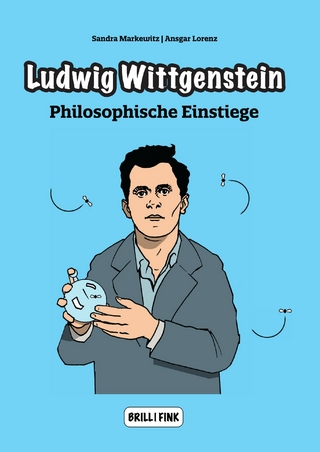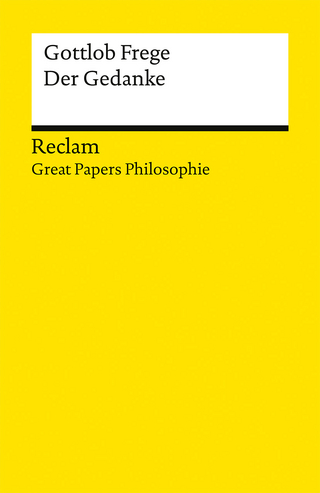
The Critical Thinking Book
Broadview Press Ltd (Verlag)
978-1-55481-393-3 (ISBN)
The Critical Thinking Book covers not only standard topics such as definitions, fallacies, and argument identification, but also other pertinent themes such as consumer choice in a market economy and political choice in a representative democracy. Interesting historical asides are included throughout, as are images, diagrams, and reflective questions. A wealth of exercises is provided, both within the text and on a supplemental website for instructors.
Gary James Jason is a Senior Lecturer at California State University, Fullerton, where he was given a “Best Teaching Award” at the Irvine campus and an “Outstanding Lecturer Award” at the main campus.
Part One: The Elements of Critical Thinking: Statements, Questions, Arguments, Cases, and DialoguesChapter 1: Critical Thinking: Developing an Effective Worldview
1.Critical Thinking and Mental Models
2.Clarity and Consistency
3.Relevance
4.Justification and Explanatory/Predictive Power
5.The Usefulness of Critical Thinking
6.Impediments to Critical Thinking
7.Critical Thinking as an Academic Discipline
8.The Organization of This Book
Chapter 2: Assertions
1.Assertions and Sentences
2.Statement Forms: Simple and Compound
3.Statement Forms: Particular and General
4.Statement Content: Necessary versus Contingent
5.Statement Content: Descriptive versus Evaluative
Chapter 3: Questions
1.Questions and Sentences
2.Types of Questions
3.Responsive Answers
4.Fallacies of Questions
Chapter 4: Identifying Single Arguments
1.Premises and Conclusions
2.Identifying Single Arguments: Rhetorical Devices
3.Identifying Single Arguments: Rhetorical Expansion
4.Identifying Single Arguments: Rhetorical Compression
5.Telling Arguments from Other Things
6.The Uses of Arguments
7.Two Types of Evidential Relations
8.Deductive Argument Forms
9.Inductive Argument Forms and the IBE
Chapter 5: Multiple Arguments, Cases, and Dialogues
1.Diagramming Multiple Arguments
2.The Case Structure
3.The IBE as a Compressed Case
4.Dialogues
Part Two: The Goals of Critical Thinking: Clarity, Relevance, Consistency, Justification, and Explanatory Power
Chapter 6: Pitfalls of Language
1.Pitfalls of Language
2.Verbosity and Jargon
3.Vagueness
4.Loaded Language and Circular Argument
5.Understatement and Overstatement
6.Ambiguity
7.Synonymy
8.Figurative Language
9.Review of Major Fallacies Discussed so Far
Chapter 7: Definition, Classification, and Concept Mapping
1.Three Tools for Organizing Thought and Clarifying Language
2.Types of Definition
3.Sense and Reference
4.Methods of Definition
5.Rules for Explicit Definitions
6.Analogical Definition
7.Classification
8.Concept Mapping
Chapter 8: Topical Relevance
1.Relevance and Questions
2.Fallacies of Refusing to Answer
3.Fallacies of Irrelevant Emotional Appeal
4.Fallacies of Ignoring the Issue
5.How to Explain Fallacies of Relevance
6.Review of the Major Fallacies Discussed so Far
Chapter 9: Deductive Reasoning I: Truth-Functional Logic
1.Two Types of Consistency
2.Cognitive Dissonance Theory
3.Basic Concepts of Deductive Logic
4.Truth Table Calculations
5.Symbolization
6.Truth Table Testing for Consistency
7.Truth Table Testing for Implication and Validity
8.Truth Table Testing for Other Deductive Concepts
9.Summary
Chapter 10: Deductive Reasoning II: Class Logic
1.A Closer Look at Statements
2.Statements Involving Two Classes
3.Venn Testing for Consistency
4.Venn Testing for Implication and Validity
5.Venn Testing for Other Concepts
6.Summary of Concepts
7.The Limitations of Truth-Functional and Class Logic
Chapter 11: Inductive Reasoning I: Observation, Memory, and Testimony
1.Sensing, Observing, and Reporting
2.Assessing Observation
3.Special Issues Concerning Observation in Natural Science
4.Assessing Memory
5.Assessing Eyewitness Testimony
6.Assessing Expert Testimony
7.The Fallacy of Faulty Appeal to Authority
8.Special Issues Concerning Expert Testimony in Journalism
9.Special Issues Concerning Expert Testimony in Legal Proceedings
10.Observation, Memory, and Testimony IBE and CBE
Chapter 12: Inductive Reasoning II: Inductive Generalization and Inductive Instantiation
1.The Pervasiveness of Inductive Generalization
2.Criteria for Assessing Generalizations
3.The Fallacy of Faulty Generalization
4.Defeasibility and General Rules
5.The Statistical Syllogism
6.The Fallacy of Faulty Instantiation
7.A Common Confusion
8.Inductive Generalization and Inductive Instantiation as IBE and CBE
9.Stereotypes and Prejudice
Chapter 13: Inductive Reasoning III: Analogies
1.The Uses of Analogy
2.Descriptive and Definitional Analogies
3.Assessing Analogical Arguments
4.The Heuristic Use of Analogies
5.Models in Science
6.Analogies in Legal Reasoning
7.Analogical Arguments as IBE and CBE
Chapter 14: Inductive Reasoning IV: Causal Inference
1.The Relation of Cause and Effect
2.Evidence for Causal Claims: Temporal and Statistical Linkages
3.Establishing Deterministic Causes
4.A More Formal Approach to Causal Reasoning
5.Establishing Statistical Causes
6.Special Issues in Medical and Pharmaceutical Research
7.The Fallacy of Faulty Causal Reasoning
8.Causal Inference as IBE and CBE
9.Review of the Five Inductive Fallacies
10.Review of All of the Previous Major Fallacies
Chapter 15: Inductive Reasoning V: Explanation, Hypothesis, and Prediction
1.Key Concepts
2.Types of Explanation
3.A Closer Look at Causal Explanations
4.Rules for Forming Hypotheses
5.Rules for Assessing Hypotheses
Part Three: Applications of Critical Thinking: Decisions in a Democratic Market Economy
Chapter 16: Classical Decision Theory: Its Uses and Problems
1.Utility and Preferences
2.Decision under Certainty: The Rational Choice Model
3.Decision under Risk
4.Decision under Uncertainty
5.Decision under Conflict
6.Challenges to Classical Decision Theory I: Several Narrow Criticisms
7.Challenges to Classical Decision Theory II: The Opacity of Costs and Benefits
8.Challenges to Classical Decision Theory III: Behavioral Decision Theory
9.Challenges to Classical Decision Theory IV: Manipulation by Others
Chapter 17: Application I: Rational versus Irrational Marketing
1.Two Main Branches of Rhetoric
2.When Is Marketing Rational?
3.Why Is Marketing so Often Irrational?
4.Psychological Mechanisms Exploited by Marketing Agents
5.Examples of Irrational Marketing Techniques
6.Special Issues in Advertising to Children
7.How to Combat Deceptive Marketing
Chapter 18: Application II: Rational versus Irrational Propaganda
1.Political Agents and Propaganda
2.Is Deceptive Propaganda More Prevalent Than Deceptive Marketing?
3.Examples of Irrational Propaganda Techniques
4.How to Combat Deceptive Propaganda
5.Propaganda in a Dictatorship
Chapter 19: Application III: Science versus Pseudo-Science
1.Healthy Science versus Pseudo-Science
2.Symptoms of Pseudo-Science
3.First Example of Pseudo-Science: Astrology
4.Second Example of Pseudo-Science: Lysenkoism
5.A Borderline Case
Glossary
Bibliography
Index
| Erscheinungsdatum | 31.03.2022 |
|---|---|
| Zusatzinfo | 21 illustrations |
| Sprache | englisch |
| Maße | 201 x 254 mm |
| Gewicht | 482 g |
| Themenwelt | Geisteswissenschaften ► Philosophie ► Logik |
| ISBN-10 | 1-55481-393-X / 155481393X |
| ISBN-13 | 978-1-55481-393-3 / 9781554813933 |
| Zustand | Neuware |
| Haben Sie eine Frage zum Produkt? |
aus dem Bereich


